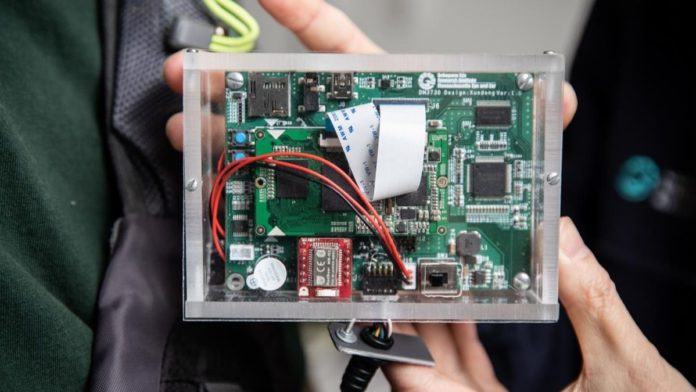A recent study published on Thursday by JAMA Ophthalmology found that a computer vision-powered wearable device may help reduce collisions and other accidents for the blind and visually impaired.
Artificial intelligence’s inexorable advance has brought many novel solutions to make the lives of physically challenged people easier. When embedded into wearables, and portable devices, artificial intelligence is improving life for the blind and visually impaired.
Computer vision is a branch of artificial intelligence (AI) that allows computers and systems to extract useful information from digital pictures, videos, and other visual inputs, as well as to perform actions or make suggestions based on that data. To mine insights from data, it leverages a subtype of machine learning called deep learning and a convolutional neural network (CNN). These technologies work together to interpret sensory data by using labels to perform convolutions and make predictions about what the model is “seeing.” They identify numeric and encoded patterns in vectors, which are used to translate all real-world visual input. The neural network performs the convolutions till the model makes predictions accurate to what humans view.
Read More: Tesla Unveils Computer Vision-Based Autopilot
In the study, the researchers developed a technological aid for the visually impaired. This aid contained an experimental device and a data recording unit that was housed in a sling backpack with a chest-mounted wide-angle camera fixed on the strap and two Bluetooth-connected vibrating wristbands worn by the user. The camera is linked to a processing unit that records images and assesses the danger of a collision based on the relative movement of approaching and surrounding objects in the camera’s field of view.
In case an impending collision is detected on the left or right side, the corresponding wristband will vibrate, whereas a head-on collision will cause both wristbands to vibrate. Unlike walking canes or any previous devices that warn of surrounding objects whether the user is walking toward them, this device evaluates relative motion and warns only of approaching obstructions that pose a collision threat while ignoring items that are not likely to cause a collision. However, it will not replace the walking canes altogether. In fact, the research showed that when used in combination with a long cane, the wearable device minimized the risk for collisions and fell by 37% when compared with other mobility aids.
According to Dr. Gang Luo, who is an associate scientist at the Schepens Eye Research Institute of Mass Eye and Ear, many blind individuals use long canes to detect obstacles and collision risks, but the risk is not entirely eliminated. Hence their team sought to develop a device that can augment these everyday mobility aids, further improving their safety. Dr. Luo is also an associate professor of ophthalmology at Harvard Medical School in Cambridge, Mass.
Dr. Luo trialed the device with his colleagues in his vision rehabilitation lab, including the lead author Shrinivas Pundlik, Ph.D., who designed the computer vision algorithm. They tested the device on 31 blind and visually impaired adults who use a long cane or guide dog, or both, to aid their daily mobility.
After being instructed on how to operate the wearable device, participants used it for roughly a month throughout everyday activities while continuing to utilize their usual mobility equipment. The wearable was randomized to flip between active and silent modes. Inactive mode, users could receive vibrating alerts for imminent collisions. The silent mode, in comparison, analyzed and captured images but did not vibrate to notify users of impending collisions.
As per Dr. Lou, the silent mode is similar to the placebo condition in many drug trials. During the testing and analysis, the wearers and researchers would have no idea when the device modes changed. The researchers examined the recorded footage for collisions. The device’s efficiency was assessed by comparing collisions that happened during the active and silent modes. This was when the team observed the collision frequency in active mode was 37% less than that in silent mode.
Apart from that, the team mentions that there is a possibility that the wearable did not identify all conceivable dangers. Before asking for U.S. Food and Drug Administration clearance, the researchers want to augment the computer vision digital processing and camera technologies to make the device more efficient, smaller, and visually attractive.
The clinical trial of this computer vision wearable device was funded by a U.S. Army Medical Research and Materiel Command grant. It received its patent from the Mass Eye and Ear.


